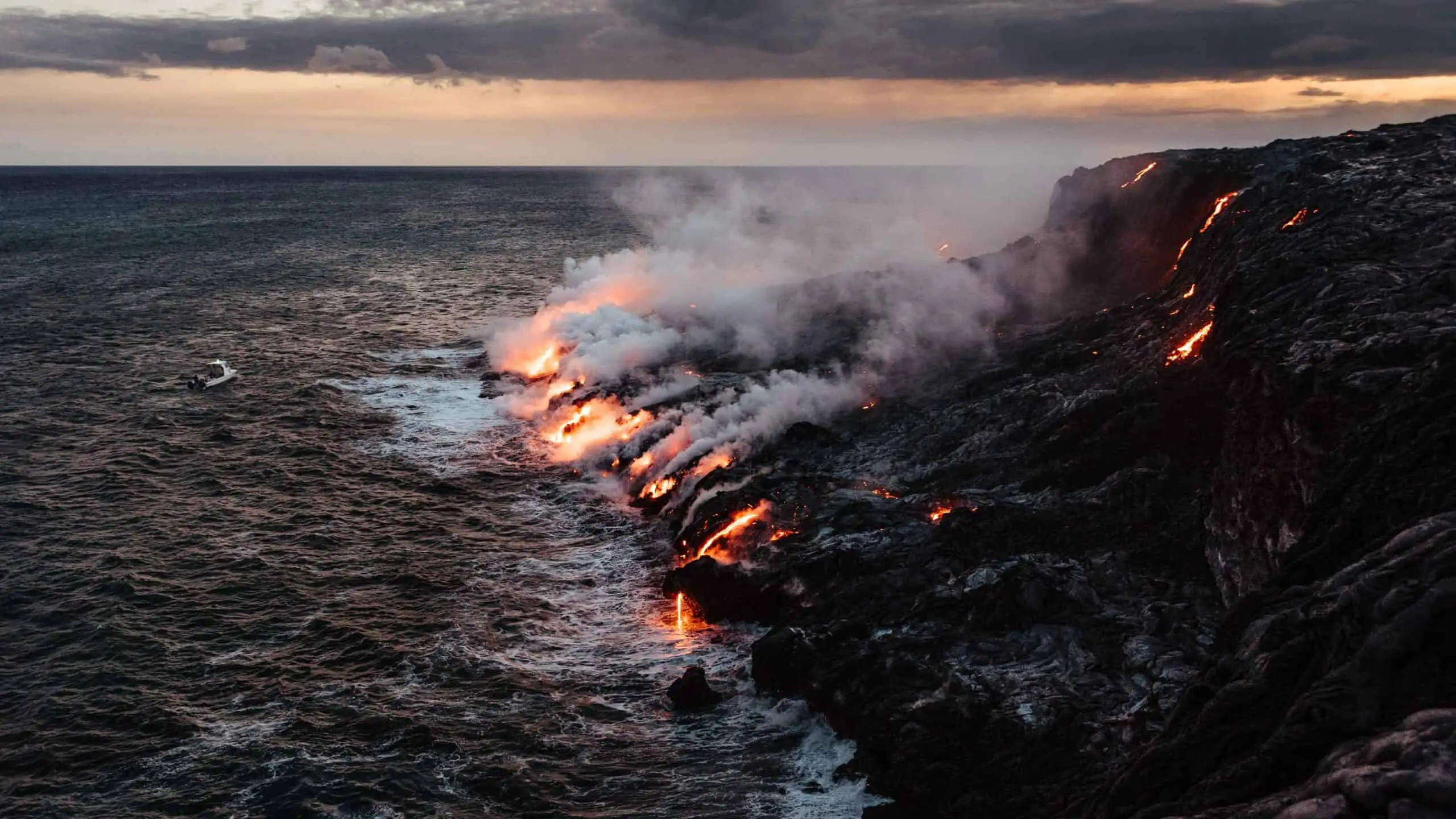Stories told by past visitors of Volcanoes National Park are undeniably intriguing. So, if you’re one of many planning to visit the site sooner, how much time should you set aside for an unforgettable experience?
You need at least one day at Volcanoes National Park to enjoy most of all it offers. The park is vast, with multiple exciting activities for sight-seers. However, if you love hiking and camping, you can extend your stay by another day or two. The entrance fee paid covers your visit for seven days.
Read on as I discuss thrilling ways to spend your adventure time, whether long or short. You’ll also discover the best time of the year and day to visit the ever-accessible park without compromising on pleasure.
How To Spend Your Time at Volcanoes National Park
Volcanoes National Park, Hawaii, isn’t your dime-a-dozen park. Not many such sites exist around the country, and the embodiment of Hawaiian culture takes the experience here to a new level.
You’ll need to ensure you’re getting the most from your valuable time spent in the park. Let’s look at three activities that could be a starting point for first-timers:
1. Take a Chain of Craters Road Tour
If you’re not careful, this 19-mile (30.3 km) scenic tour can take a whole day due to the multiple exciting stops. But if you’ve already planned a full day for this tour, you won’t regret the time spent.
Eastern Luamanu along the route has been a popular stop for past visitors. A volcanic fissure opened into the crater in 1974, spewing lava that crept across the road, consuming the lush rainforest. Over 40 years later, you’ll enjoy seeing the cooled lava flow around you while reliving the fissure from the clear vegetation swath.
When you’re done visiting the tour’s three craters, swiftly head to Puʻuloa for an immersive experience of Hawaiian faith. This highly sacred petroglyph field—the largest in the state—was a ground for local rituals. You’ll enjoy a few hours hiking the 1.5-mile (2.4-kilometer) round-trip highlighting 23,000 fascinating petroglyph images.
At last, there’s no better way to end a road tour than enjoying sweeping picturesque views, this time of the Pacific, from the Hōlei Sea Arch. Standing on the stark lava rock makes you about 90 ft. (27.4 meters) above the ocean. The cliff formation dates back 550 years, thanks to some overtime improvement by “differential erosion.”
2. Visit Kahuku Unit
Sitting on the Mauna Loa’s southern slopes is an ancient traditional land division: the Kahuku Unit. Ranch, resting on 116,000 acres (469 square kilometers), was one of the finest before a significant volcanic event that still takes its toll to this day.
The area’s fascinating history makes hiking or biking over seven trails worthwhile. On Saturdays and Sundays, knowledgeable park rangers can take you on a 45-minute tour, narrating exciting stories of the landscape.
According to National Park Service, you’d regret not bringing your camera on your Palm Trail hike, as the trip gives you one of the best panoramic views in Kahuku. There’s a hidden pasture with flourishing vegetation along the Pu’u o Lokuana Trail. Plus, The Kona Trail has relics of Kahuku’s ranching era on the fields and across the 1887 lava flow.
You can join ranger programs if you haven’t exhausted your stay time hiking the trails. They host exclusive, kid-friendly lectures about the area while answering any questions you might have.
With bathroom and eating breaks, the visit will likely take you a full day.
3. Track a Volcano Eruption

True to its name, Volcanoes National Park comprises two volcanoes. Your visit, regardless of how long or short, may never feel complete without seeing them.
Kilauea, one of the famous volcanoes, is among the most active on earth, emerging from sea level around 100,000 years ago. It began erupting on September 29, 2021, so you’re still in luck to witness lava flow if you go quickly.
Three public visitor overlooks are available:
- Kilauea Overlook, where lava oozes out of the crater’s southeast region
- Kupina’i Pali Overlook, from where you can also see lava lake, smog, and fissure vents
- Keanakako’i Overlook, which provides another great view of lava lake, smog, and fissure vents
Past visitors recommend you visit at night for a better view of the lava, but expect slight traffic delays if you don’t go early.
Mauna Loa, the other notable volcano, is not erupting presently. However, it’s still worth visiting, as it’s considered the largest volcano on earth. It’s older than its neighbor, Kilauea, having emerged over sea level about 400,000 years ago.
Hikers can try reaching Mauna Loa’s peak through designated trails. This is something you can’t freely do on Kilauea. If you’re not up for a hike, no one’s stopping you from driving!
Exploring either volcano can take a whole day and even night if you crave seeing Kilauea’s lava red hot glow. Be prepared to spend a significant amount of time at these attractions.
Best Time To Visit Volcanoes National Park
Hawaii is relatively warm all year because of its proximity to the equator. So, you can expect to enjoy your visit regardless of the time of year.
However, also know that the rainy season starts from November through March. It doesn’t rain every day during this period, but a heavy storm is far from ideal for enjoying the park. Keep this in mind when planning your trip.
As for daily visits, the 24-hour opening means that you can access the park at any time. As a general rule, your most anticipated activity should guide you.
If you’re looking to hike Mauna Loa, come during the day (before 9 pm), get a map at the Visitor Center, and be on your way. For the best lava sightings, visit the area in the evening from 4 pm and wait till it’s much darker. Don’t forget to take some spectacular photos!
Conclusion
You need at least one day at Volcanoes National Park to enjoy its scenic sightings. You can extend your stay there by a day or two if you haven’t had enough, as your entrance fee covers a seven-day visit.
Three excellent ways to spend your time include visiting the Kahuku Unit, taking a road tour on the Chain of Craters route, and tracking the Kilauea eruption.
Any time of the year and day is ideal for a visit to the park, as it is open 24/7.
Sources
- National Park Service: Drive Chain of Craters Road
- National Park Service: Luamanu and July 1974 Flow
- National Park Service: Kahuku History
- Tripadvisor: Kilauea (Hawaii Volcanoes National Park) – All You Need to Know
- USGS: Recent Eruption
- Tripadvisor: Mauna Loa (Volcano) – All You Need to Know Before You Go
- Wikipedia: Kīlauea
- Wikipedia: Mauna Loa
- National Weather Service: Climate of Hawaii



